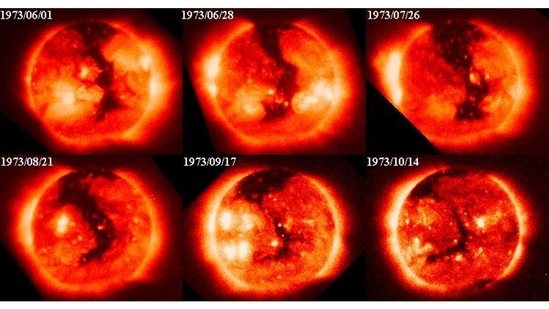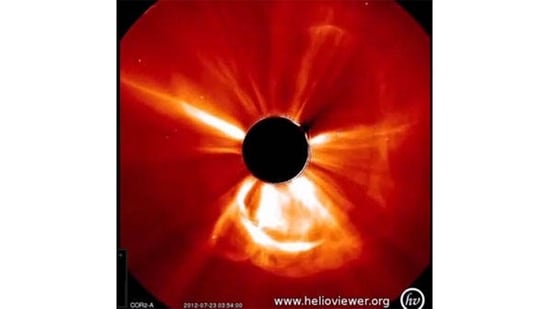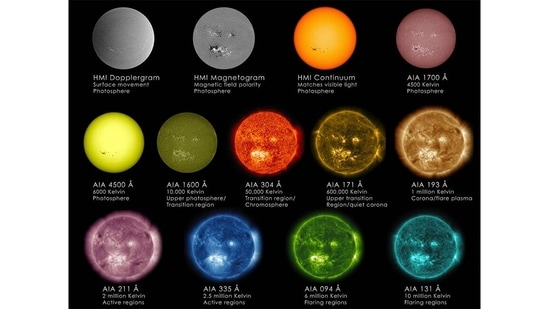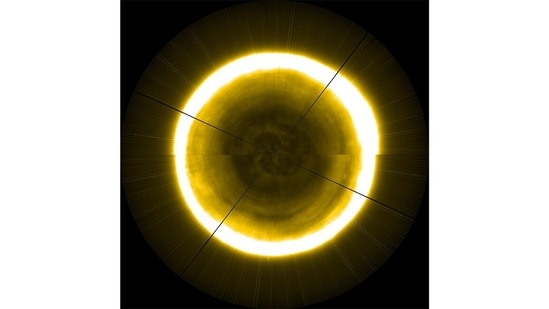Photos: Snapshots from staring at the Sun
Published on Oct 20, 2022 04:13 PM IST
- It’s essentially a massive nuclear fusion bomb that explodes every day. We live in its turbulent extended atmosphere. And the closer we peer at the Sun, the more mysteries emerge. The hottest question so far: Why is the corona, at over 1 million degrees Celsius, so much hotter than the Sun’s surface (which averages 5,500 degrees C)? But there are others. For instance, what is the lifecycle of its relatively little “campfires” or tiny flares? New instruments sent out on solar probes have already entered the corona or outer atmosphere, focusing on features new to humankind. On Earth, giant ground telescopes are taking ever-clearer images of the surface. These could help us understand our star and, more vitally, predict space weather, geomagnetic storms, possible satellite and power outages. Read on to see how far we’ve come, in six frames.
1 / 6

Published on Oct 20, 2022 04:13 PM IST
At first sight: For centuries, sunspots were thought to be Mercury passing across the Sun. By the early 17th century, with the invention of the telescope, astronomers could get a clearer look. In 1610, Galileo Galilei (who first used the telescope to observe space) in Italy and his British contemporary Thomas Harriot identified these as spots on the Sun. Seen here are 35 drawings of sunspots created by Galileo between June 2 and July 8, 1612.(Image Courtesy: The Galileo Project / Rice University)
2 / 6

Published on Oct 20, 2022 04:13 PM IST
Outside view: This is among the first images of the Sun taken from outside Earth’s atmosphere. It was taken from NASA’s Skylab, the US’s first space station, which was part of the Apollo programme. Skylab stayed in orbit for nine months, and it took the first X-ray images of the star. Since those first snapshots, images have been teaching us about the temperamental lord of the solar system. These images revealed, for instance, the presence of coronal holes, large, irregular regions that are cooler than their surroundings and often appear during the declining phases of the 11-year solar cycle.(Image Courtesy: National Aeronautics and Space Administration (NASA) / Marshall Solar Physics)
3 / 6

Published on Oct 20, 2022 04:13 PM IST
A hit and a miss: In July 2012, Earth could have been hit by a large geomagnetic storm that would have taken down communication systems and electric grids and lit up our skies with auroras. But the giant coronal mass ejection (CME) occurred on the far side of the Sun, leaving Earth in the clear. Some of the radiation did graze Earth, causing auroras to light up the sky at the Poles. If the CME had occurred just a week earlier (the Sun rotates on its own axis every 27 days), Earth would have been in its direct path. This image shows the eruption of the CME, as captured by NASA’s Solar Terrestrial Relations Observatory (STEREO).(Image Courtesy: NASA / STEREO)
4 / 6

Published on Oct 20, 2022 04:13 PM IST
Rainbow hues: We see the Sun as yellow, sometimes orange as it nears the horizon. But the Sun emits light in all colours of the spectrum. Yellow is just the brightest of its wavelengths, and the one that penetrates Earth’s atmosphere best. Space research organisations use a range of instruments to capture the star’s different hues. Above are views in the 13 different wavelengths captured by instruments on NASA’s Solar Dynamics Observatory. These manifest at different temperature ranges, and indicate different processes occurring on the Sun’s surface.(Image Courtesy: NASA / SDO / Goddard Space Flight Center)
5 / 6

Published on Oct 20, 2022 04:13 PM IST
Pole vault: The most enigmatic and unexplored parts of the Sun are its poles. Until a few years ago, these were completely uncharted territory. The only satellite mission to fly past the solar poles – the Ulysses, launched in the mid-1990s by NASA and the European Space Agency (ESA) – didn’t have any imaging instruments on board. Most modern missions hover at the star’s equator. So scientists have had to get creative in estimating what the poles look like. In 2018, ESA used a patchwork of data collected from its Proba-2 mission to stitch together this image of a pole in extreme ultraviolet light.(Image Courtesy: ESA / Royal Observatory of Belgium)
6 / 6

Published on Oct 20, 2022 04:13 PM IST





